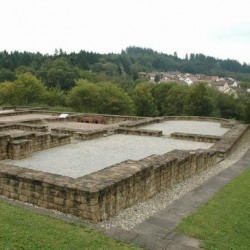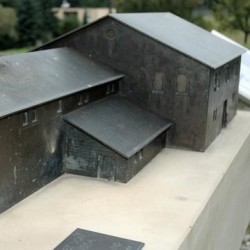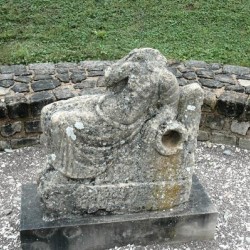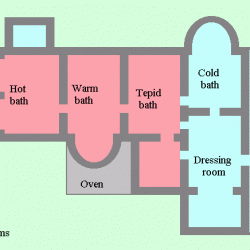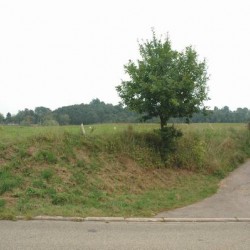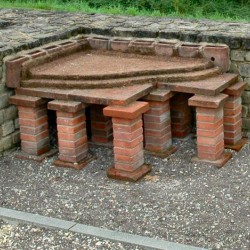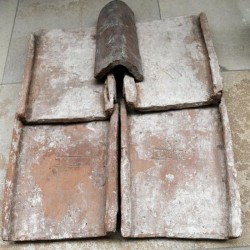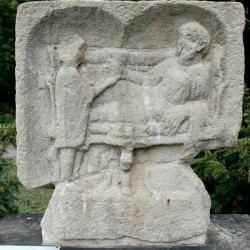Schirenhof
Q1735417Schwäbisch Gmünd - Schirenhof: site of a Roman fort along the Raetian limes.
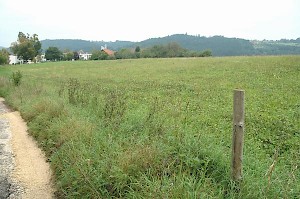
To the west of modern Schwäbisch Gmünd, the remains of the Roman limes fort of Schirenhof have been discovered on this meadow. It measured 157x130 m. The limes wall itself was on the hills to the north; and the nearest military settlement was Freimühle, which has been identified on the hilltop to the right on the first picture.
Hardly anything of the former fort can be discerned today, but the street corner on the second photo coincides with the southern corner of the ancient military settlement. The modern road is in the ancient ditch. The roofs of the barracks were covered with tiles; living must have been comfortable.
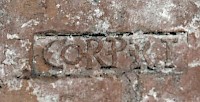
The fort was occupied by the Cohors Prima Flavia Raetorum, the First Raetian regiment, surnamed "Flavia". This last-mentioned element is left out on the stamp shown on the photo, which may be read as COhoRs Prima RaETorum. A cohors was a unit of about 500-600 men auxiliary infantry.
Like the other forts in this part of the limes, Schirendorf was built during the reign of Antoninus Pius (138-161) and evacuated in 259/260, when Franks and Alamans, two Germanic tribes, invaded the Roman empire and the entire Rhine frontier collapsed. The Alamans were able to cross the Alps. Later, the Romans restored the frontier, but the triangle between Rhine and Danube, the Agri Decumates, was never recovered.
To the south of the fort was a civil settlement (vicus), and in the east was the cemetery. In the north is the valley of the river Rems, which must have been used to transport food to the inhabitants of the Schirenhof fort and village. Halfway down the western slope of the hill on which the fort was situated, the soldiers would find their bathhouse, the thermae. The inhabitants of the civil settlement may also have used this facility. Still, the building appears to have been too large for the settlement. Archaeologists have discovered that parts of it were no longer used after 238.
Like all other thermae, the bathhouse of Schirenhof was decorated. Archaeologists have found a little statue of a water nymph, a personification of a well or other flowing water, which was made in c.200. It must have stood against a wall; water flowed out of the rock on which the nymph reclines. It is now in the museum of Schwäbisch Gmünd.
The cemetery was 500 m east of the fort. About 310 burials have been identified, which is a fraction of the people who must have lived in the fort and the village, but is still one of the largest cemeteries that was excavated in this part of Germany. The tombstone on the last photo is a copy of an original that was excavated near Schirendorf and is now in the Limes Museum in nearby Aalen. It shows how the deceased man is having dinner in the afterworld; a slave offers him a glass of wine.
The next limes castle to the west is Freimühle; to the east is Böbingen.
